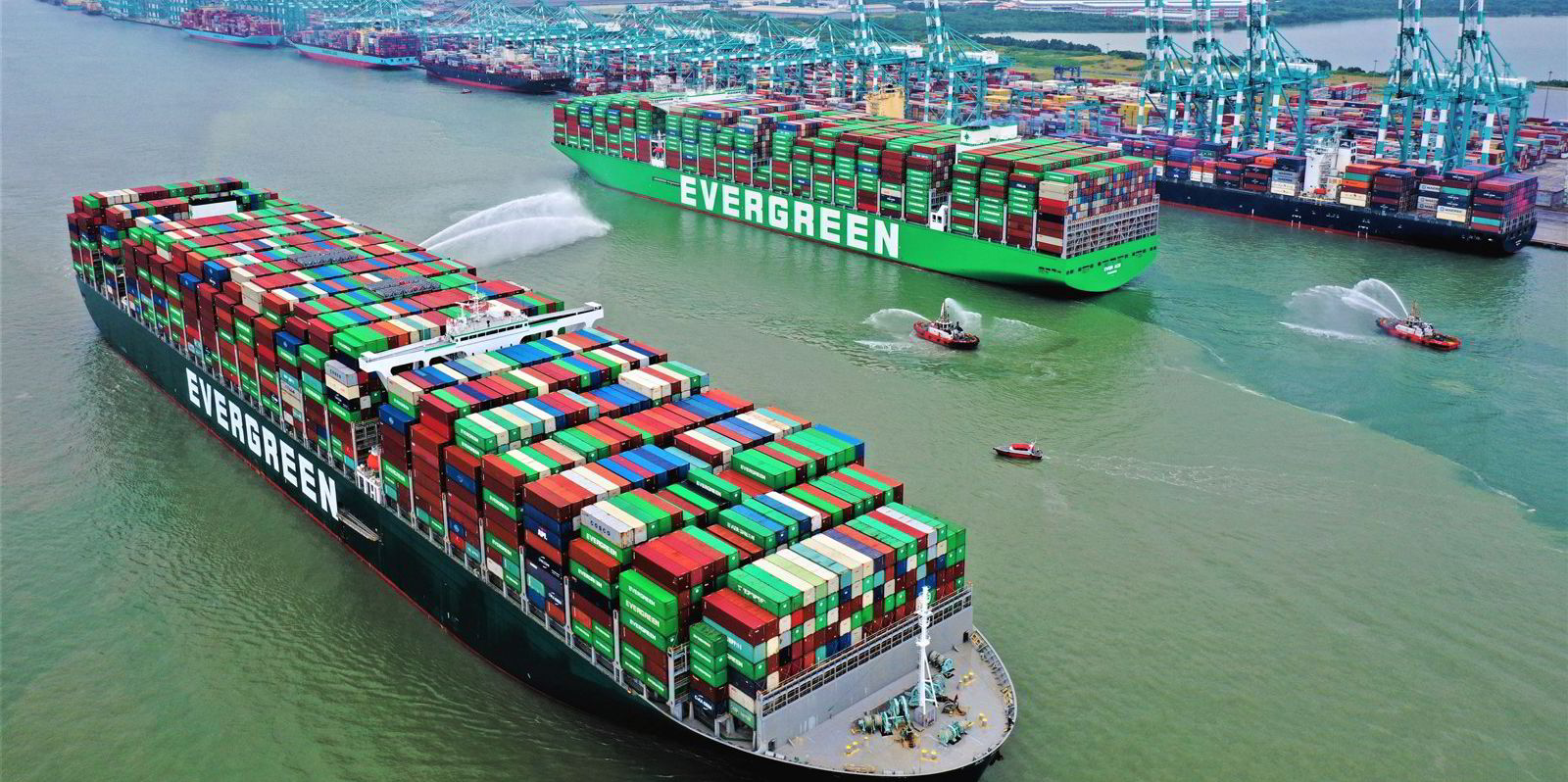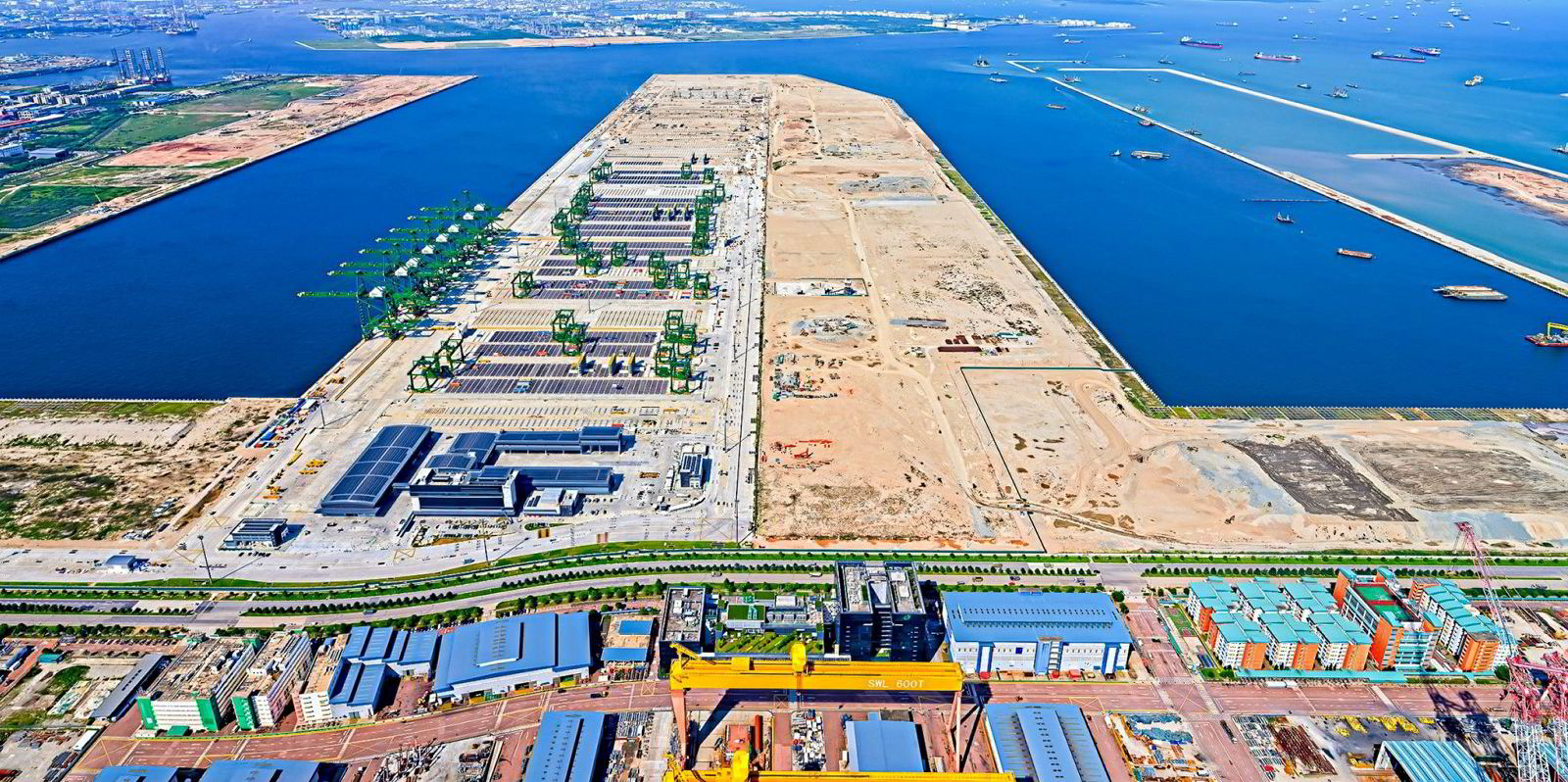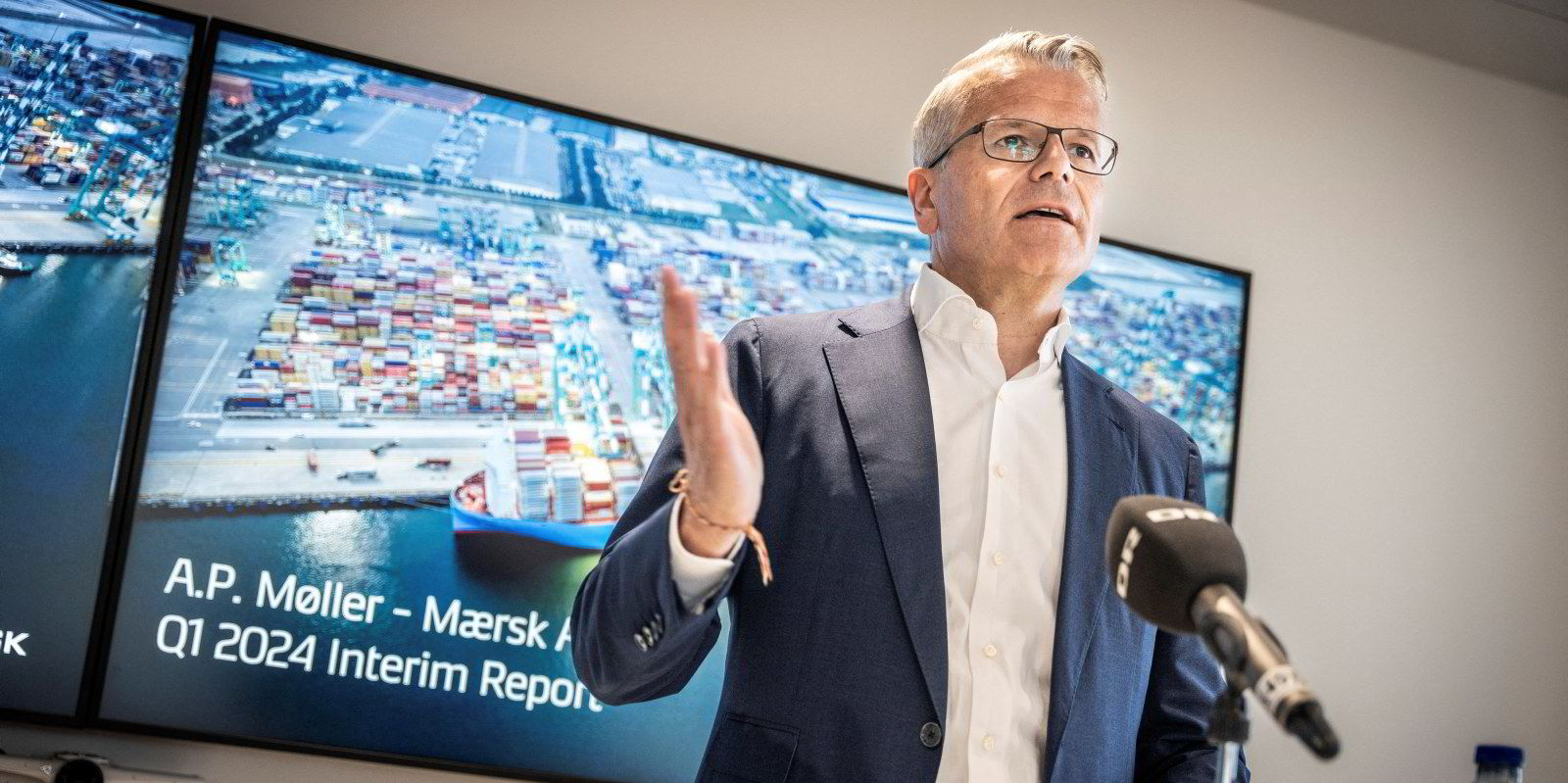Congestion at key Asian container ports is worsening, with berthing delays increasing at Chinese and South East Asian hubs, according to a top industry analyst.
“Although the total capacity waiting at Singapore has eased slightly from 450,000 teu a week ago to 380,000 teu, the strain has shifted to [Malaysia’s] Port Klang and Tanjung Pelepas,” said container shipping data provider Linerlytica.
“Waiting times have also risen across all main Chinese port regions, with Shanghai and Qingdao experiencing the longest delays.”
Congestion globally has edged up to 2.1m teu, and further deterioration is expected, as disruptions to sailing schedules at various Asian ports are causing vessel bunching at ports downstream.
Linerlytica said the capacity crunch in the container shipping market has already caused AP Moller-Maersk to withdraw one transpacific service barely eight weeks into its launch.
Meanwhile, almost half of Asia-Europe westbound sailings are said to have missed their scheduled departure dates as port congestion at South East Asian hub ports remain elevated.
HSBC’s global head of transport & logistics research, Parash Jain, said: “The Shanghai Containerised Freight Index (SCFI) jumped 13% week on week, crossing the 3,000 mark for the first time since August 2022, driven by surges in Shanghai to Europe and Mediterranean routes.
“The SCFI is up 76% from end March 2024. This week’s rate increase likely reflects the successful pass through of the 1 June general rate increases…”
Jain said the surge is being fuelled by a combination of strong demand and supply drivers including concerns that US tariff increases for China are driving a front-loading of shipments.
“Separately, rising freight rates and potentially longer lead times from prolonged Red Sea disruptions and a looming strike at US Gulf and US East Coast ports are also driving cargo owners to ship early,” he said.
“We think the situation is less likely to ease any time soon, given the early peak season coinciding with capacity and box shortages due to the Red Sea disruptions.”
Last week, Singapore’s PSA said it was boosting berthing capacity to tackle the huge levels of congestion at the world’s second-largest container port.
It reactivated older berths and yards at Keppel Terminal to raise the weekly number of containers that could be handled by 50,000 teu to 820,000 teu.
Singapore’s Maritime and Port Authority said the diversion of vessels around the Cape of Good Hope due to the Red Sea crisis had disrupted arrival schedules at major ports and caused a bunching effect.





